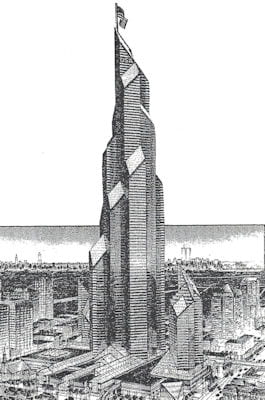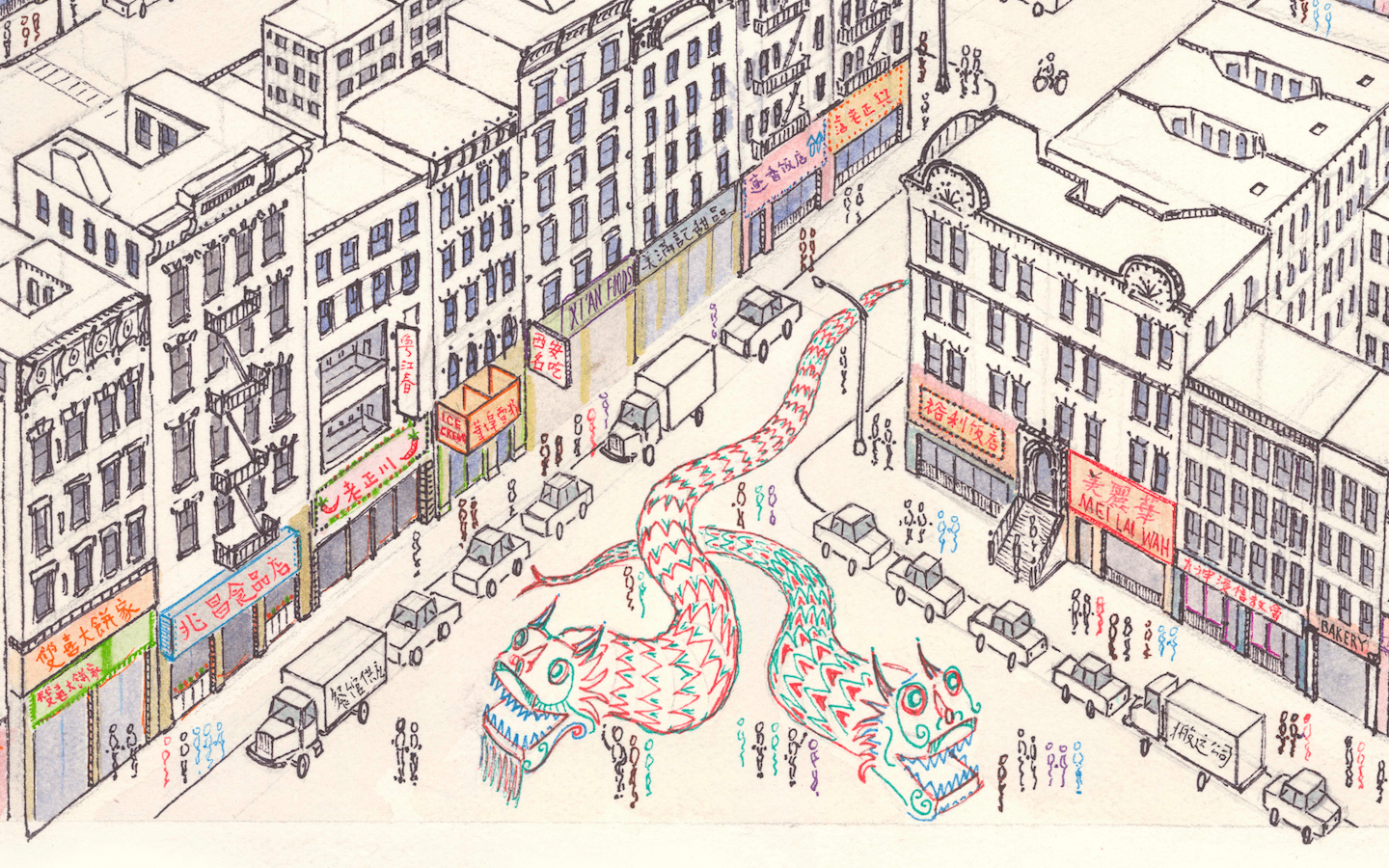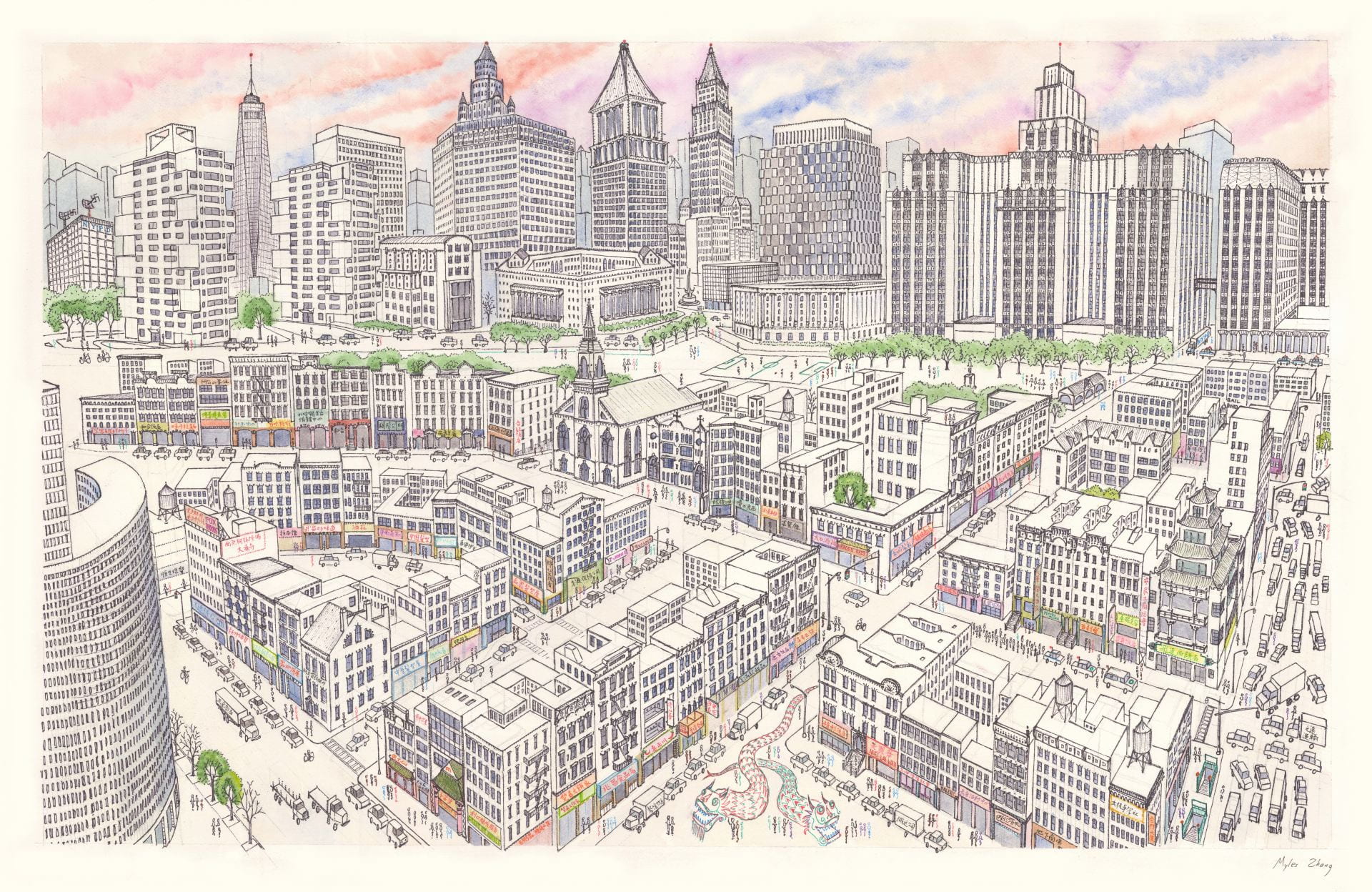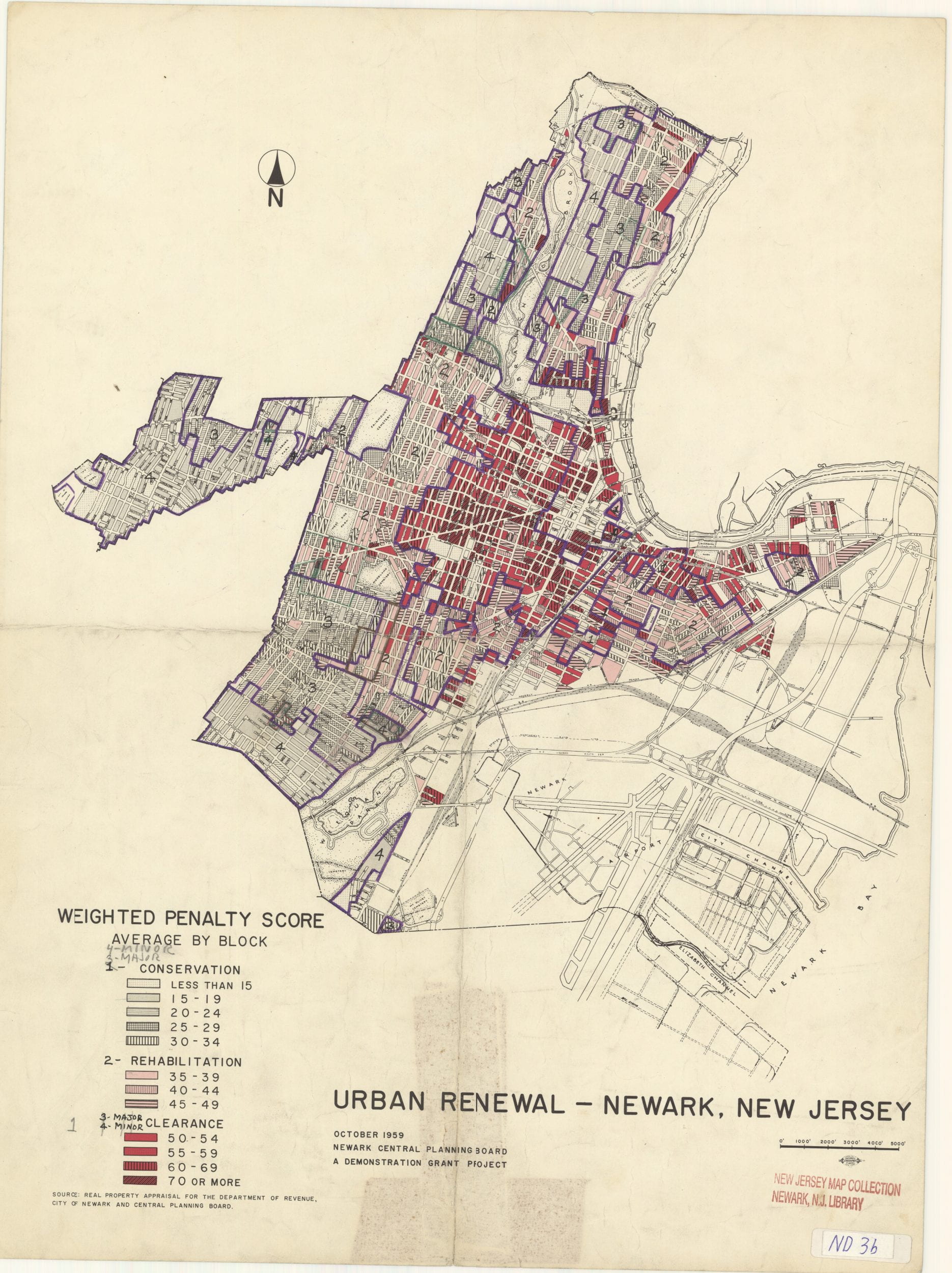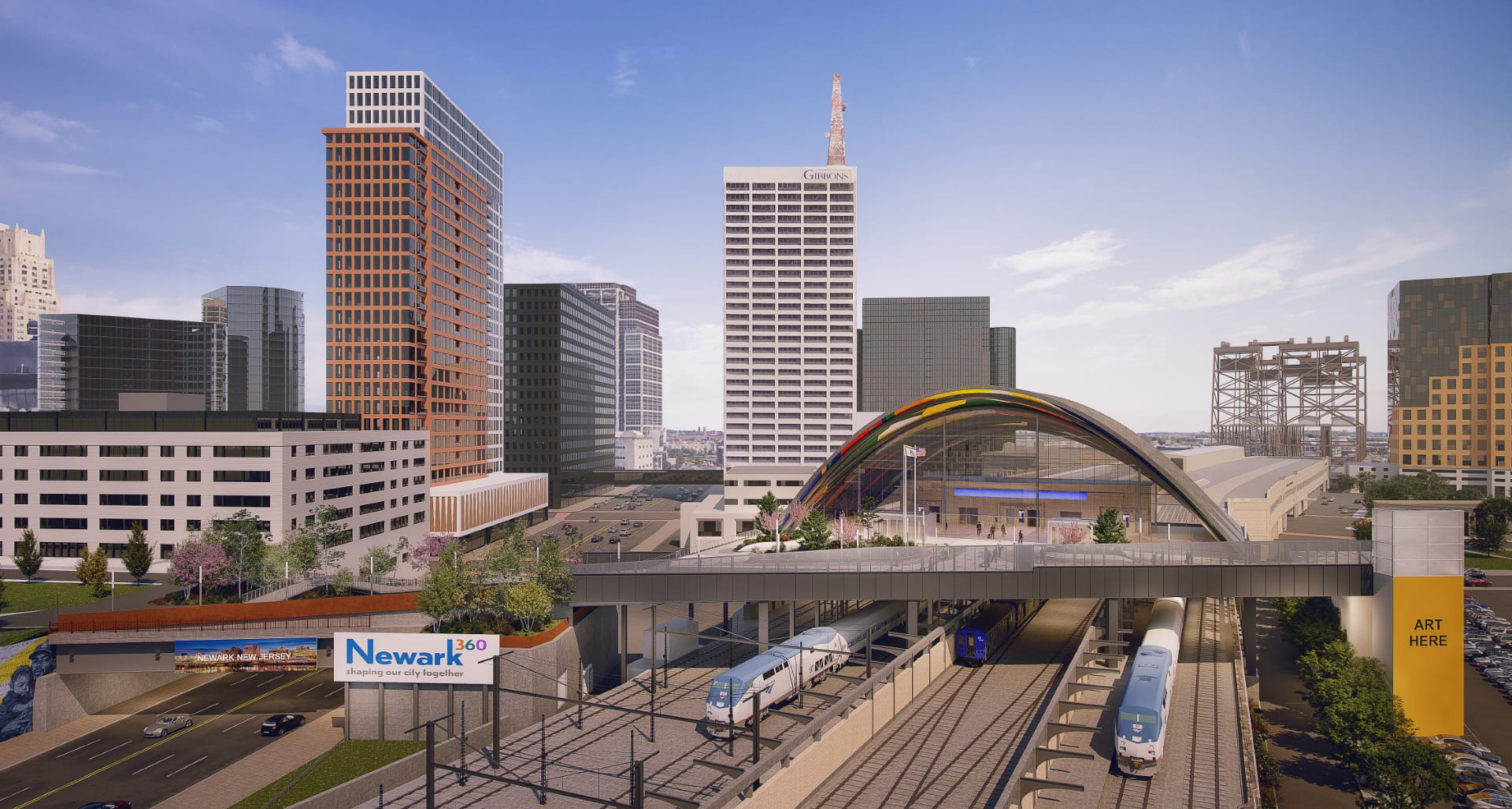
Myles Zhang
View publications by category:
200+ Posts
architecture of fear British history building construction car culture Chinatown collection data visualization Detroit dissertation project drawing Eastern State Penitentiary essay Essex County Jail film historical GIS historic preservation history of technology medieval history models Newark Newark art Newark history New York City NYC art NYC history NYC photography panopticon pastel photo-essay photography planning politics pop-up cities prison history program application essays proposals for architecture protest public speaking rail travel ruins sounds of the city time-lapse cartography walking watercolor waterfront
Tag Archives: essay
No comments
Historic preservation is a better business model.
The work stoppage at Halo tower construction site points to why we need a different model of economic development.
As also published by the local paper TAPinto
.
Jersey Digs and TAPinto reported last week that amid lawsuits and protests, work had stopped on the 38-floor Halo skyscraper in Newark. The developers claimed that their lender was unable to make good on the $90 million construction loan. If the developer is unable to get their funds in order, that tower will become another rusting and unfinished shell like Harry Grant’s proposal to build the world’s tallest skyscraper in Newark. Until it was demolished to build Prudential Center, Grant’s unfinished Renaissance Mall abandoned mid-construction was a visual eyesore on Broad Street for decades.
At 38 floors with 297 units, the per unit cost of construction of Halo will be just over $300,000. This is one of the more expensive towers downtown. By comparison with another recently completed project, at 21 floors with 264 units, the per unit construction cost was $240,000 at Walker House. (source) Halo tower is all new construction. Walker House is adaptive reuse of an existing historic building. Based on industry data, adaptive reuse of old buildings costs 16 percent less than ground-up construction, and it reduces construction schedules by 18 percent. (source)
For many new projects, the cost of using all new materials, steel structural frames, and concrete floors will increase the cost of construction. Instead of building from scratch like at Halo, downtown Newark still has no shortage of vacant and century-old office skyscrapers that could have been converted to residential use. Newark has no shortage of vacancies: the 16-story Firemen’s Insurance Company Building, the 12-story Kinney Building, the 10-story Chamber of Commerce Building, the 20-story IDT building, the 15-story Griffith Building, as well as dozens of other smaller-scale vacant buildings near Broad and Market. The adaptive reuse of these older structures is also eligible for significant Historic Preservation Tax Credits that can cover up to 20 percent of all construction costs. This is a more sustainable business model.
In addition, the Downtown Newark BID reported that in 2023, about one sixth of all downtown office space was vacant (source). This figure does not include the above vacant office towers that have been off the market for decades and are not currently available to rent. At the intersection of Broad and Market, the ground floors of most buildings are occupied. But the upper floors are entirely vacant – many for decades. Factoring in all buildings in downtown Newark, the actual vacancy rate is a good deal higher and approaches thirty percent by my estimate.
To insist on all new construction when the vacancy rate is so high in older existing structures does not make good economic sense. The priority should be to solve the existing vacancy rate before embarking on ambitious new construction, particularly in our city’s historic districts.
Despite tax breaks and state subsidies for downtown Newark that total more than a billion dollars in the past thirty years (source), the downtown property market remains fragile. My concern is that putting up many new luxury towers in a time of soft market demand will not address either the vacancy problem or the need for long-term and permanent affordable housing.
Beyond high-rise skyscrapers, there is another (and more sustainable) development model we should be encouraging: the incremental construction of mid-rise infill buildings in existing neighborhoods. Instead of a skyscraper like Halo perched on a five-story car garage at street level, downtown developers need to focus on filling in the gaps in our urban fabric. Downtown Newark has at least 200 acres of surface parking. (source) The priority should be filling this land to create complete streetscapes and an uninterrupted row of occupied buildings on a walkable sidewalk.
The developers and lawyer behind Halo and copy-cat projects of near-identical design at 577 Broad Street say that we have a housing shortage, and building more luxury towers will solve that shortage. The historical record does not support this claim. Manhattan had a population 40 percent larger in the 1910s, and Newark had a population 40 percent larger in the 1950s. Both cities accomplished this feat of downtown population density entirely through mid-rise construction during a time before skyscrapers. The results were neighborhoods of small buildings, instead of a complex of super tall buildings – isolated from the street and cut off from the city like Newark Gateway Center. Today, as in history, the past provides examples of successful and unsuccessful urbanism. Let us learn from history.
.
A Different Model for Urbanism
A better model is possible: The Vermella Project at Broad Street Station, the new construction next to the PATH train in Harrison, and the Teachers Village project across the street from Halo represent a different and more sustainable development model. They are each a series of smaller buildings with separate entrances around courtyards with public space. Had financing been interrupted midway through, the developers of each would have still had two or three completed and market-ready structures in a larger complex.
The famous architect and city planner Daniel Burnham is known to have remarked in the 1870s: “Make no little plans.” Following his belief, the problem in Newark is that we have made too many “big plans.” This hubris includes skyscrapers of the scale there are not funds to complete, like Halo and Harry Grant’s ego towers. This hubris includes structures so large they require either long-term construction loans or significant taxpayer subsidies, like Prudential Center that is unlikely to ever make good on the $200 million in public funds we gave them. This hubris includes the seven billion dollars we promised the Amazon Corporation in our attempt to bring their global headquarters to Newark.
In an unpredictable market with high interest rates, now is not the time for skyscrapers aiming to be the tallest in the region, metaphorical Towers of Babel. Now is the time for a human-scale urbanism of walk-up townhouses, infill buildings, and mid-rise structures of less than 10 stories on smaller lots. This makes more financial sense. This makes more urban sense. And this makes more sense for what Newark needs most: a human-scale urbanism of the kind we once had before mid-century urban renewal.
As the City of Newark considers continued upzoning the Ironbound and more megastructures, now is the time to learn from the best of history with the tools of historic preservation.
Setting Up Sex Offenders for Failure
How the intersection of law and city planning exposes sex offenders to longer prison sentences
Published to the AGORA: Issue 18, 2023-24
The Urban Planning and Design Journal at the University of Michigan
.
Abstract:
Our nation’s laws for sex offenders, although designed to protect the public, often have the opposite effect: increasing the chance sex offenders will be re-arrested and re-convicted for new crimes. The core of the problem is not that public safety rules, like Megan’s Law, are too weak. The problem is that these laws are written too strongly and too powerfully that they have the reverse effect: increasing the chances that sex offenders will commit new crimes. There are many problems with sex offender laws: too weak in areas they should be stronger; too strong in areas where they should be more flexible. But today I will examine just one aspect of the sex offender registry (the home address requirement) and how it affects one place (New York City). This analysis of New York City points to concrete and better ways to protect public safety than the current system: ways that reforming Megan’s Law will increase public safety.
.
Article:
Download article as PDF / open in new window >
.
Acknowledgements:
Thank you to dissertation advisers Dan O’Flaherty for his research on homelessness and Mary Gallagher for her advice on case law. This essay was originally written for Heather Ann Thompson’s fall 2023 PhD seminar on The American Carceral State. Most of all, thank you to editor Jessie Williams for her patient and insightful line edits.
Mapping Manhattan Chinatown’s Public Realm
.
Created with architect and urbanist Stephen Fan for City as Living Lab
Funded by the University of Michigan’s Rackham Program in Public Scholarship
Inspired by reading the book Manhattan’s Public Spaces:
Production, Revitalization, Commodification by Ana Morcillo Pallarés
.
Chinatown’s Public Realm
Along Mott Street, boxes of fruits and vegetables from the US, Latin America, and China flow from the private open storefronts and onto the public sidewalks and curbs. Forklifts navigate around crates and delivery trucks as vendors, residents, tourists, and shoppers–from regional Asian restaurant owners to West-African immigrants–animate the narrow walkways. After business hours, private produce stands become public places to sit, chat, people-watch, or nap as a sidewalk masseuse sets up two chairs on the public sidewalk to provide his private services.
Away from the commercial corridors, teenagers sit in circles sipping on bubble tea on the Pace High School track while senior citizens slap playing cards on a makeshift table along the track perimeter. Inside the Chinese Consolidated Benevolent Association, teachers begin their Chinese language class while protesters in Columbus Park call for ending violence against Asian Americans.
In creating this map, we hope to stimulate conversations about how public space can be better used, designed, managed, and reimagined: to inspire action in shaping a more resilient and inclusive public realm.
.
.
Read the map in English and Chinese PDF. 阅读简体中文版
2,500+ copies printed and distributed
.
.

Stephen Fan (left) and Myles Zhang (right)




Brochure Front

Brochure Back
.
Credits and Collaborators:
In alphabetical order
Stephen Fan – co-author
Lulu Barry – map docent
Kari Conte – CALL staff
Liza Cucco – program manager
Olivia Georgia – executive director of CALL
Shane Keaney – graphic designer
Rebecca Lucher – programs and operations
Mary Miss – founder and artistic director of CALL
Calla Flood Tardino – CALL staff
Chloe Zhang – map docent
.







Image Left

Image Center

Image Right
.
.
Process
This map illustrates the public/private uses/spaces of Manhattan Chinatown’s pedestrian life. The map is divided into two sections: the upper depicts public spaces, and the lower section private spaces. From left to right are a spectrum of private to public uses.
In consultation with Chinatown residents and based on a series of walking tours and community forums, we developed the themes and activities shown on this map. We were inspired from reading Jane Jacobs and Michael Sorkin’s descriptions of street life and the delicate balance of public vs. private uses that play out on the city sidewalks. We hope this map will be a classroom and community resource to equip the public with a language and questions to interrogate their own built environments.
Below are scenes from a community event we held in summer 2021. Chinatown residents were invited to annotate an early draft of our map with their experiences and memories of the community.
In addition, over spring and summer 2024, City as Living Lab commissioned two students as map docents – Lulu Barry and Chloe Zhang – to sit in front of the map each Friday and Sunday afternoon. They engaged in conversation at their table with passing Chinatown residents and tourists, sharing insights from the map and eliciting community responses to this project. Thanks to their work, this project now has a larger audience and copies of the map are distributed across dozens of Chinatown community partners.
.

Walking Tours and Community Meetings
From summer 2024

Walking tour with co-author Stephen Fan

Walking tour in Columbus Park with co-author Stephen Fan

Walking tour in Columbus Park with co-author Stephen Fan

Walking tour on Doyers Street with co-author Stephen Fan

Walking tour on the Bowery

Walking tour on the Bowery

Walking tour with co-author Stephen Fan

City as Living Lab

Walking tour with co-author Stephen Fan on Mosco Street
.
Chinese music: Feng Yang (The Flower Drum)
.
Reflections on my experience as PhD student, halfway through the program
As a third year student, I am more than halfway through the PhD program. So I thought now is as good a time as any to reflect.
In the same spirit of making public my undergraduate application to study at Columbia and my PhD application to study at Michigan, I am sharing the exam essays I wrote as a PhD student. When applying to Columbia, Oxford, Cambridge, and now Michigan, I struggled to find online example essays and statements that had worked for other applicants. In my case, I was fortunate to have academic parents to read my application statements and college professors to mentor me on how they saw admissions from the other side of the table. But I also realize that most applicants do not have these kinds of advantages in their social networks and must rely more on the internet for advice.
After 40 credits of coursework to be completed in no more than two years, I am expected to take a series of exams that qualify me to write the dissertation. When applying to PhD programs, I had no idea there were prelim exams or what the requirements were. Each prelim exam is different, unique to the student and my relationship with the faculty committee members on my dissertation. The exams consist of four things:
1. A Prelim Reading List: books assigned to me by committee members Robert Fishman, Ana Morcillo Pallarés, and Matthew Lassiter.
This list is the basis for their two questions.
2. A Minor Essay on Metropolitan History: written in 48 hours timed environment
3. A Major Essay on 20th-c. Urban History: written in 96 hours
4. A 90-minute exam with full committee to grill me on knowledge of reading list and topics not covered in the essays
I am posting them online, not as a “model” for what the ideal exam should look like and more as an inflection point and sample of the document that the members on your committee could expect you to write some day. In full disclosure, I am also sharing the draft of what will become my PhD proposal and the rough draft of three chapters completed. Maybe this reduces the cultural capital required to succeed at elite institutions. At the least, it is the kind of document I wish I could have had and known about when I was applying to PhD programs.
Read More
PhD Dissertation Project (draft in progress)
Creating the Divided Metropolis:
How Newark came to be a poor city in a wealthy region
A dissertation submitted in partial satisfaction of the requirements for the degree Doctor of Philosophy in Architecture

Pulaski Skyway
.
Project Brief
“Wherever American cities are going, Newark will get there first” Mayor Kenneth Gibson declared in 1970, as the first black mayor of any major city in what is now the American Northeast and the Rust Belt. The history of Newark’s urban decline is specific to Newark and unique to the details of this city. And yet, Newark’s story is national in its implications, and mirrored in hundreds of other American cities large and small that also experienced decline.
From the 1950s through 1970s, Newark embarked on one of the most extensive programs of state-funded urban renewal in the nation, less costly only than those of New York City (20 times Newark’s population); Chicago (eight times larger); Philadelphia (five times larger), and Boston (twice as large). Newark’s program was certainly among the most ambitious: to clear out the areas called slums, to construct highways, to build public housing, to stimulate the urban economy, and – in the end – to stop urban decline. And yet for all the billions spent and an estimated 70,000 out of Newark’s 400,000 people displaced, the program failed to reverse urban economic and population decline. What mixture of actors and institutions – city planners, politicians, realtors, developers, and banks – caused Newark’s program to fail?
This project describes how two national programs impacted Newark: urban renewal (a program that invested in keeping the city stable) and redlining (a program that deprived investment to make the city unstable). The two programs – both initiated by local, regional, and federal governments and designed to profit real estate developers – coexisted and undermined each other in a decade of flaws and contradictions. Redlining usually refers to the practice when banks choose to not invest in a certain neighborhood or city because of the race of who lives there. Redlining is racial and economic discrimination. More importantly, although rarely framed in such terms, redlining describes the practice more broadly of choosing not to invest in a place because it is a city and considered a less profitable investment. Banks, developers, realtors, businesses, department stores, and the fabric of social institutions vital for urban life all migrated from the city to the suburbs. These other institutions all redlined Newark independently of the real estate lobby. More than anti-black, redlining is anti-urban.
This project frames Newark’s story in national terms. Each chapter examines one form of redlining in Newark, and then frames this form of localized redlining in the national picture of urban abandonment. There are five frames: transportation, finance, housing, welfare, and employment. This range of actors across areas – public and private, local and national – did not collaborate in a conspiracy to deprive Newark and the American city of wealth. But their actions overlapped and mutually reinforced each other to leave the American city behind and ensure that attempts to save the city through state-funded urban renewal would fail. Through anti-urban redlining practices in each of these five areas – transportation, finance, housing, welfare, and employment – urban decline was the inevitable result. The history of all places is told through one place, and the history of one place is told through all places.
.
Drafts of Chapters in Progress
Interstate Highways in Newark |
Public Housing in Newark |
How an infrastructure project ruined a racially integrated neighborhood |
How public housing was designed to fail black families |
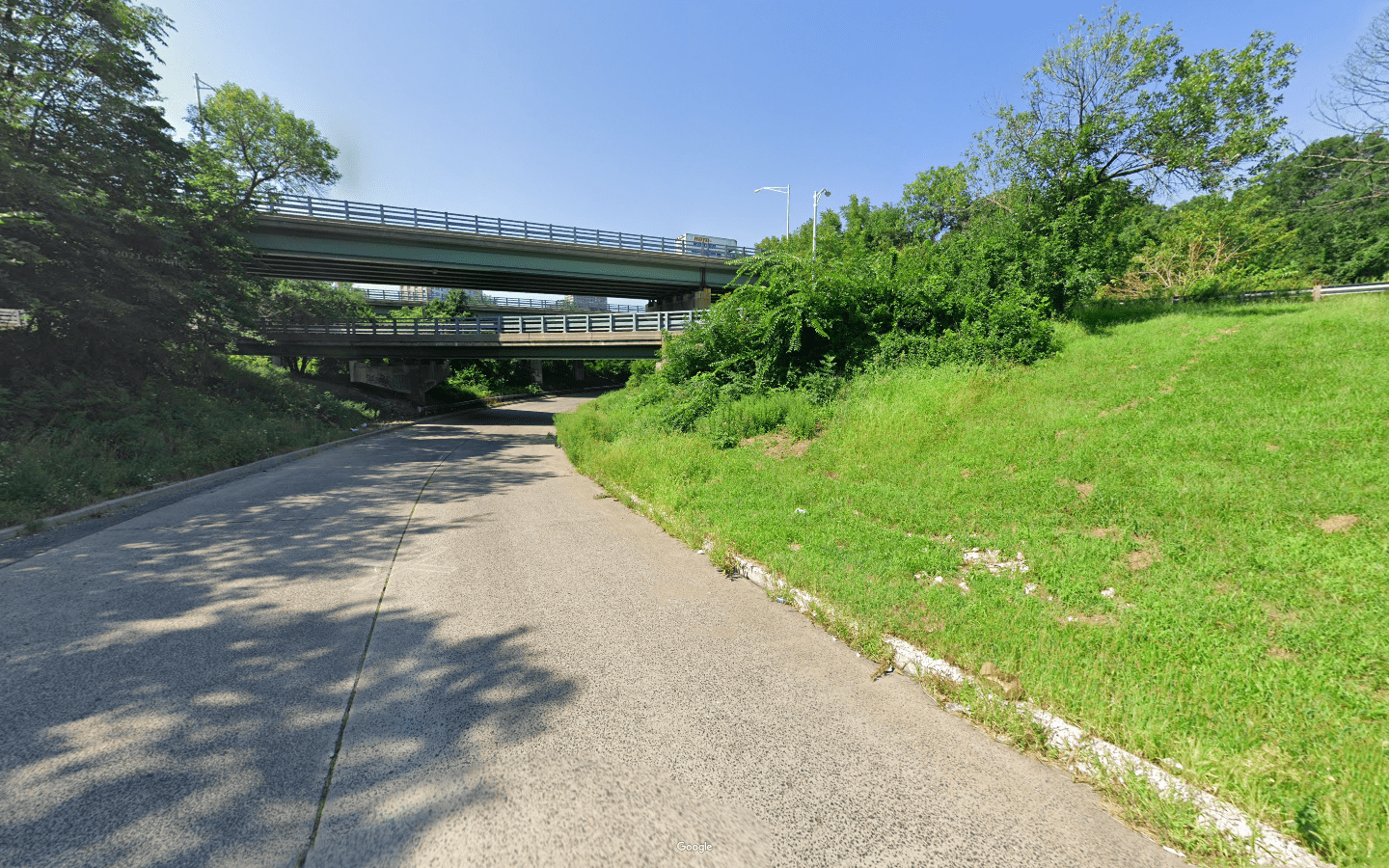 |
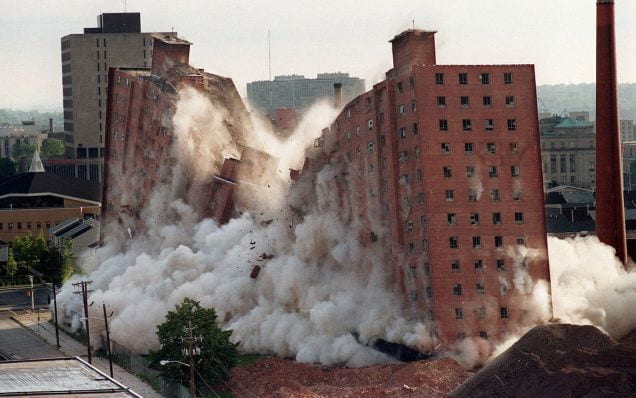 |
.
Committee Members
Robert Fishman, planning history
Ana Morcillo Pallarés, built environment
Matthew Lassiter, urban/suburban history
.
See all my urban history publications about this place
.
See all my artwork about urban decline and urban decay
.
The Last Two Miles (draft of dissertation chapter)
Published to my website privately, under consideration for publication in Journal of Urban History

Weequahic in 1960

Weequahic in 2023
Weequahic before the highway, 1960 |
Same view after the highway, 2023 |
.
How an infrastructure project contributed to today’s urban-suburban racial wealth gap
City planners designed Interstate 78 to destroy a stable and racially integrated neighborhood of 7,500 middle-class homeowners
.
Weequahic in 1955 before the highway |
Weequahic in 2023 after the highway |

Weequahic in 1955 before the highway

Weequahic in 2023 after the highway
.
It did not have to be this way…
In 1958, the New Jersey State Transportation Department had a choice: Build Interstate 78 on a route that displaced some 43 families in the suburb of Hillside or build it on a path that displaced some 7,800 Jewish and black families in one of Newark’s only racially integrated neighborhoods. Engineers and planners chose the urban highway path through the Jewish and black neighborhood over the less destructive suburban route. It is a story local to Newark, but mirrored hundreds of times across the landscape of other American cities. The story of Interstate 78 is a microcosm that reveals much about the politics and inequalities of city planning in a suburban and auto age.
Highways slice through Newark on all sides. They cut the city into parts and divide neighborhoods from each other. The millions of cars and trucks that pass through Newark annually emit soot particles that give Newark air the highest concentration in the state of nitrogen dioxide and carbon monoxide. To the east of Downtown is the six-lane Route 22 built in the 1930s that divides the city from the Passaic River and restricts public access to the waterfront. To the north of Downtown is the six-lane Interstate 280 built in the 1940s. To the west of Downtown is the eight-lane Garden State Parkway built in the 1950s that divides Newark from commuter suburbs to the west. To the south of Newark is the ten-lane Interstate 78 built in the 1960s that divides Newark from historically and once majority-white suburbs like Hillside.
Collectively, these four roads box in Newark from four sides. New Jersey’s largest concentration of poverty, where the median family income is a mere $38,000, is separated from the rest of the state by a highway moat up to 400 feet wide in parts of Interstate 78. By contrast, the median family income in the Essex County suburbs that surround Newark is over $100,000. Pre-pandemic some 200,000 residents of these commuter suburbs drove into Newark on these highways, parked in Newark, made salaries on average above $50,000, and drove home at the end of each workday, leaving behind some 300 acres of surface parking lots.
It did not have to be this way.
.
Based on archival records, planning documents from the Newark Public Library, and racial redlining records from the federal government, read the full report on how the Weequahic community fought and failed to block construction of Interstate 78. →
.
Belmont Avenue in 1962 |
Identical camera angle in 2023 |

E side Belmont Ave looking SE from NW corner Belmont Terrace in 1962

E side Belmont Ave looking SE from NW corner Belmont Terrace in 2022
.
Two proposals for the path of Interstate 78
A destructive proposal from state planners vs. an alternative vision from Newark residents
.
| Proposal from State and City Planners | Proposal from Weequahic Residents | |
| Length in miles | 4.52 | About 4.7 |
| People displaced | 7,818 | Fewer than 500 |
| Demographics | 10% black | Fewer than 1% black |
| Homes demolished | 2,247 homes | 40 homes |
.
Johnson Avenue in 1961 |
Identical camera angle in 2023 |

Weequahic W side Johnson Ave looking SW from #284 in 1961

Weequahic W side Johnson Ave looking SW from #284 in 2022
.
1. Further viewing and interactive mapping
Photo comparisons of Newark’s Weequahic neighborhood before vs. after highway construction, in 1962 vs. today
Related publication from my website Newark Changing
2. Further Reading
For a near parallel story, see Robert Caro’s chapter on how Robert Moses drove the Cross Bronx Expressway through the Jewish neighborhood of East Tremont. In a story both local and national, Moses could have routed the highway through an adjacent park on path that would have displaced only a few hundred people. He chose the path through East Tremont, resulting in what Caro claims was the destruction of 2,000 families from a stable working class tenement neighborhood. Read more at:
Robert Caro, “Chapter 37: One Mile,” in The Power Broker (New York: Vintage Books, 1974).
3. Acknowledgements
I am grateful to my parents for their unwavering support of my studies, as well as my dissertation adviser Robert Fishman. Newark still struggles with the legacies of redlining and ongoing air pollution from its highways, port, and airport. In this fight against environmental racism, the activists at the South Ward Environmental Alliance and Ironbound Community Corporation are key actors. This history essay is written for them.
.
Jeliff Avenue in 1962 |
Identical camera angle in 2023 |

Weequahic N side Watson looking NE from opposite Jelliff in 1962

Weequahic N side Watson looking NE from opposite Jelliff in 2022
.
.
Hillside Avenue in 1962 |
Identical camera angle in 2023 |

Weequahic E side Hillside looking NE from #315 in 1962

Weequahic E side Hillside looking NE from #315 in 2022
Built on a Billion-Dollar Bed of Corporate Tax Breaks
What kinds of tax breaks are we giving to redevelop Downtown Newark?
Who is getting them?
An investigative report on public funds for private profit.
.
“Free enterprise is a term that refers, in practice, to a system of public subsidy and private profit, with massive government intervention in the economy to maintain a welfare state for the rich.”
– Noam Chomsky
.
Contents
[1] Who owns the land around Mulberry Commons?
[2] If past predicts future, what kind of past tax breaks have we given?
[3] The problem is not tax breaks. The problem is: Who gets them?
[4] How can we ensure equitable economic development in Newark?
Five policy recommendations.
.
Artist’s rendering of Newark Penn Station expansion
.
Introduction: A Case Study in Edison Parking
The City of Newark borrowed $110 million to pay for a pedestrian bridge over Route 21. This new link between Mulberry Commons and Penn Station will allow travelers, event goers, and sports fans to walk directly from the trains to the games at the arena. Newark City Hall and the media are describing this as Newark’s equivalent and response to New York City’s High Line. This project follows on the already $10 million spent on building Mulberry Commons.
As part of misguided car-centered 20th-century urban planning, thousands of highways were built in our nation through low-income communities of color, to divide the less privileged in hundreds of places like Newark. Through the tools of public investment in public space, now is a moment to make wrong historical injustices like Route 21, Route 22, Interstate 78, and Interstate 280. Now is a historic opportunity for the urban form as tool of reparations.
However, what parts of the public – divided across lines of race, income, and home address – will benefit the most from this project? Will the benefits of this investment disproportionately go to a few people or institutions, such as Prudential Center patrons and Edison Parking tenants?
Read More
The City as Carceral State
Context: The following personal essay accompanied my application for the Gupta Values Scholarship from the University of Michigan. I am sharing it here because it speaks more broadly to my background, education, activism, and research interests.
.
Entrance gate to the Old Essex County Jail
.
One out of every one hundred black men in my neighborhood of Newark, NJ is currently in prison. At least half have a permanent criminal record as formerly incarcerated people. Most charges are for drug use and possession, often marijuana records from when marijuana was illegal. My earliest memories of Newark are of the homeless walking down our street to the nearby food pantry and young men carrying boom boxes on their shoulders (this was before the iPod). I will always remember observing one woman as she passed our house each day. The first time I saw her, she had been recently evicted and dragged two suitcases behind her. With each passing week, the suitcases gradually grew lighter until – after several weeks – all she had left was a grocery bag of belongings, her dignity gradually stripped away. Up our street was the public housing project of Baxter Terrace – three-story red brick barracks where the urban poor lived under constant police surveillance. Most were unemployed and all were on public welfare.
I remember taking the train to school in the suburbs. In the span of only five miles, vacant lots and abandoned buildings in one of the nation’s poorest cities gave way to large homes on tree-lined streets in one of the nation’s wealthiest suburbs. The distance of five miles – or in some cases a single city street – was all that separated the poverty of my city from the wealth of its suburbs. At the city limits of Newark, a system of one-way roads, streets without sidewalks, and aggressive “neighborhood watch” signs separated the city from the suburb. On one block, apartment buildings, treeless streets, and bodegas that accepted food stamps. Just one block over, there were century-old trees and four-bedroom homes selling for up to a million dollars. Here in these suburbs, homeowners commuted to Downtown Newark each day and returned home each night, bringing home with them the wealth they made in the city. So little and yet so much separated these two worlds.
Martin Luther King described America in a 1968 speech he gave in Detroit: “There are literally two Americas. Every city in our country has this kind of dualism, this schizophrenia, split at so many parts, and so every city ends up being two cities rather than one. There are two Americas. One America is beautiful for situation. [….] But there is another America. In this other America, thousands and thousands of people, men in particular walk the streets in search for jobs that do not exist.” So much and yet so little has changed since 1968. The racial wealth gap is almost the same today as it was in 1970. In Newark, median black family income is less than $30,000. In Newark suburbs, median family incomes are over $100,000.
Read More
Goodbye Baxter Terrace
Written by my father Zemin Zhang on December 2, 2007

“Revitalization” of Baxter Terrace
“I love you darling’
“Baby, you know I do
“But I’ve got to see this Book of Love
“Find out why it’s true”
Every day in 1955, Charles Patrick, 17, and a group of teenagers came together to sing in the Baxter Terrace’s recreation hall. By 1958, they had sung their heart out and their song, “Who Wrote the Book of Love?” hit the country and even spread as far as Europe and Australia. “Oh, I wonder, wonder ohm ba doo who….. who wrote the book of love?” Charles never found the answer and two members of the Monotones, the Ryanes Brothers, died in their 30’s. Now that Baxter Terrance has been scheduled for demolition, I wonder if people could find some old and broken pages of the Book of Love from the rubble of this 66 year-old project.





